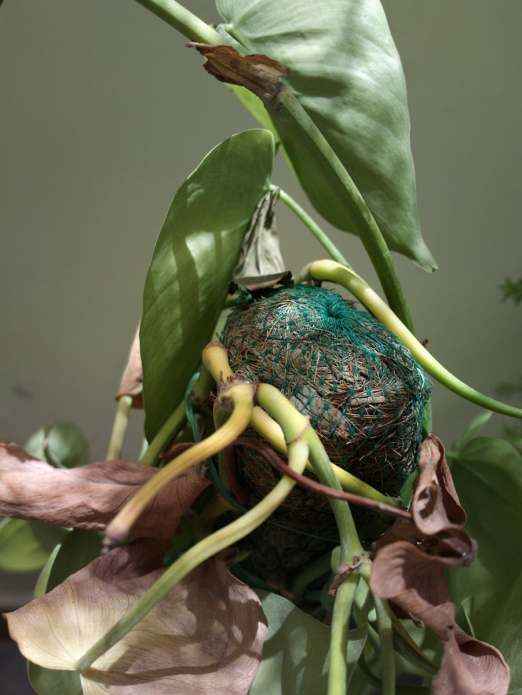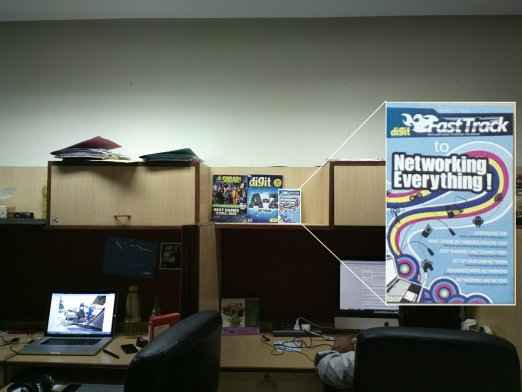The Nokia 808 PureView is possibly the best cameraphone ever made. Any feature above and beyond the camera is basically a bonus. Symbian won't really be the OS of your choice for your primary smartphone. However, if this were an indication of things to come, the next PureView with Windows Phone OS would probably make a lot of rivals go red in the face.
Design & Build
For all that it brings to the table, the 808 will not win any points in a slimness competition. At 13.9mm thickness, the 808 does have a big footprint. Maybe it is not to be blamed as much as we think, mostly because ultra slim phones have spoiled us over the last few years.
Weirdly, the phone does have decidedly different thickness at different points. To understand this, you need to flip the phone over and see how the camera sensor clearly sits on a higher platform than the rest of the battery cover. We understand that it takes space to fit in a monster 41MP sensor, Carl Zeiss optics and Xenon flash, but this creates another problem – the phone will rest on the camera’s territory when kept flat on a surface. Inevitably, the bit will get scratched quite badly, over time. Nokia will hopefully offer a camera cover accessory quite soon, or maybe they already do, but the sealed review unit that we received did not have that.
Now that we are here, let us speak about this part of the phone first, before moving to the front. The review unit we received was the white version, and the colour really stands out. The battery cover has a plain and thankfully, matte finish. No risk of scratches or fingerprints ruining the perfectly pearly look of the phone! The only niggle is that the phone’s battery cover is forced to deploy the “use nails to prise open” mechanism. Normally, we would have deducted points for that, but in this case, the 41MP sensor is reason enough for a reprieve.
The left spine remains completely clean, while the right spine gets the volume rocker, the traditional Nokia lock screen slider and the two-stage shutter key. Speaking of which, the shutter key is slightly on the harder side, and will mostly induce unaccounted for movement when taking a photograph. We may be nitpicking here, but you will be better off using the onscreen tap-to-click mechanism. The 3.5mm jack, micro HDMI and micro USB populate the top spine.
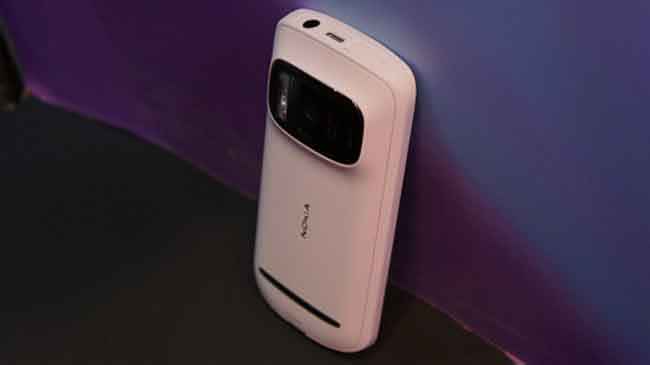 |
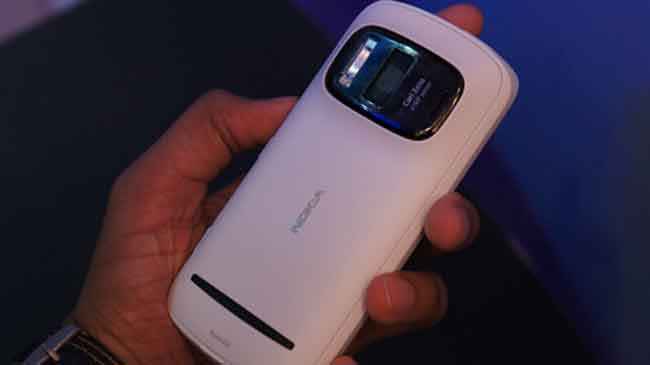 |
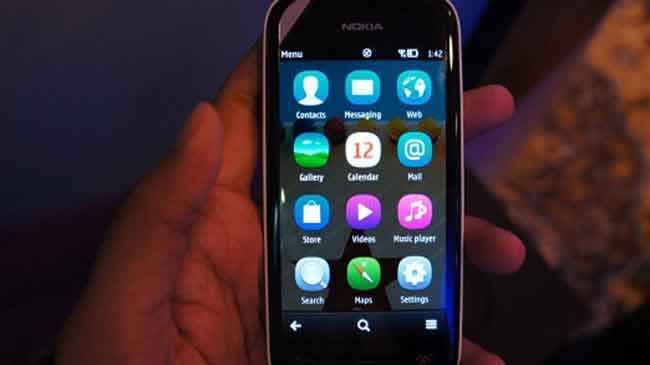 |
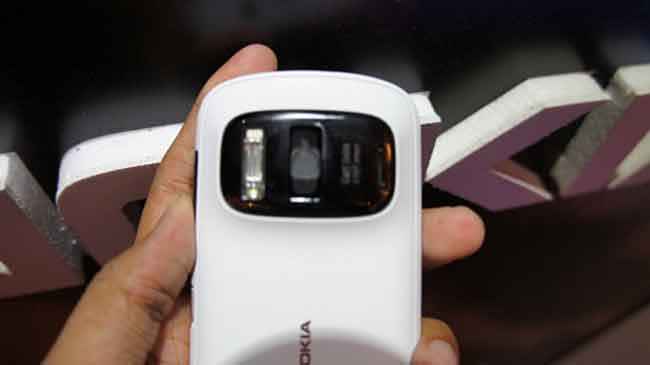 |
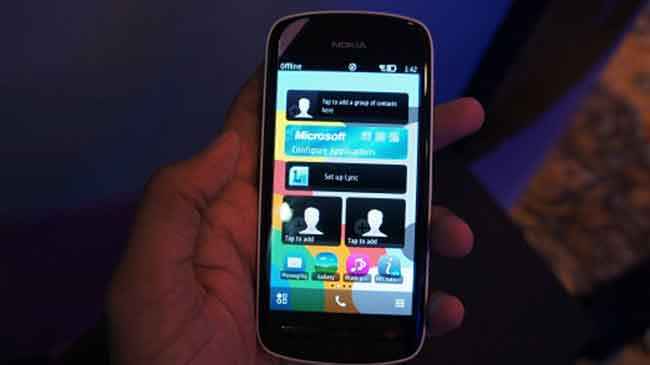 |
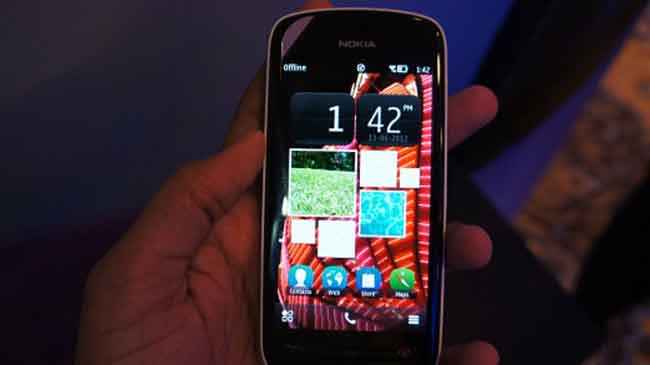 |
The 4.0-inch display on the front is surrounded by a slightly shiny black bezel, but the width on the sides has been well controlled, so as to keep the phone’s dimension in check. Unfortunately, the keys are still not touch sensitive, which is a bit of “an odd one out” situation in a mostly touch environment. However, they do respond well, and quite sure about the pressure you need to apply every time. We would have loved touch sensitive keys though.
Overall, excellent build quality. Once you move past the “it is thick” routine, you will appreciate how well put-together this phone is. Featuring typical solid and durable Nokia build quality, it has no inspirations from the world of glossy phones. The 808’s design feels very agreeable, despite the slightly bulky dimensions.
Features & Specifications
When the Nokia first announced the “808 PureView – 41megapixel shooter,” the news took a long time to sink in. Most looked onto it with a lot of skepticism, wondering how the Finnish company would manage to deliver good per-pixel quality from so many pixels packed into such a tiny space. Functionally, using the PureView’s camera is pretty much the same as using any cameraphone – you press a button that starts the camera up, you point, wait for focus, you shoot. However, what happens behind that plastic shell is a whole different story.
The camera UI has been designed to take full advantage of the ridiculously powerful sensor in the camera. The first thing to note is that you can either shoot in full resolution mode, which records images in 38 megapixels (if you select 4:3 aspect ratio, but 36 megapixels if you’re shooting 16:9). Mind you, Nokia’s claims of lossless zoom are not applicable in this mode, as, well, you cannot zoom when shooting in full resolution. Switching to PureView mode allows you to zoom to various degrees, depending on whether you choose to shoot in 8, 5 or 3 megapixels. Regardless of what mode you are in, you will have the option to dial in exposure compensation (up to 3 stops over and under), along with setting custom white balance, choosing a focus mode (infinity, closeup, portrait or automatic). These in themselves are more settings that you would find on most camera that have been slapped onto a phone (inside joke here is that this is a camera with a phone bolted to it).
Clicking on the little cog icon on top of the screen reveals a plethora of options. Here, you can choose between automatic shooting, scene and creative mode (configurable with up to three different settings under C1, C2 and C3). There’s not a whole lot you can tweak when shooting in auto mode, but the creative mode opens up a whole new world. Scrolling further down, you can select the resolution at which you want to shoot (PureView vs. Full resolution), aspect ratio (4:3 vs. 16:9). Moving further down, you can choose colour tones (between normal, sepia, black and white, and vivid), the kind of capture mode you want to use (normal, bracketing, interval and self-timer). Then there is the option to tweak the contrast and sharpness in slider form.
Nokia has never really been a part of the power game in the smartphone territory, but that isn’t to say that the 808 doesn’t have the grunt – it boasts of a 1.3GHz ARM11 processor. However, the only bottleneck is the 512MB RAM, which is a big surprise. We expected 1GB at least, considering the price and what this phone is meant to do.
For those of you who click a lot of photographs, the 808 is surely a phone you must be considering. To get you into action straightaway, the 808 comes with 16GB internal storage, with a card slot for 32GB more.
(Camera Testing and Review, by Swapnil Mathur)
Visit page two, to read more about the Nokia 808 PureView's features & specifications, as well as its performance, and our verdict…
Features & Specifications, contd.,
Surprisingly, for a camera that clicks really high-resolution photographs, the 4-inch AMOLED display has a surprisingly low resolution of 640 x 360 pixels. Whatever images you click, this display will not do them justice. You will have to transfer them to your laptop, or use the HDMI-out to a television. We are quite perplexed why Nokia would carry forward the same resolution as seen on the likes of the Nokia N8 and the Nokia X7 quite a while back. But it is not all doom and gloom, more so because the AMOLED display does fight back for lost ground, mostly in terms of colour reproduction and the crispness of the text on it. Nokia’s ClearBlack technology does add a bit to the good work AMOLED was already doing. Not the best display size or the resolution for watching videos, but the crispness bit will be very helpful in reading any kind of text. Comfortable – that is the key word for this display.
However, Symbian Belle does have its issues. One of them is that it tends to have an inconsistent response to touch commands. We cannot blame the touchscreen for this at all, because this inconsistency is mostly limited to the home screen and the apps list. Beyond that, within any application, touch works brilliantly. The UI still retains the traditional Symbian look and usability, particularly once you move beyond the “new” homescreens and into the nausea inducing familiarity / boredom / please feel free to add your own word here! There is no way to tweak the way the UI looks, and the worst part is there are really no good quality third party apps to do that as well. Settings and in-app options are still stacked like a tree, which after we have become used to the Android and iOS style of one-touch access, just feels like a pain!
Performance
Nokia has provided a whole dearth of options that can be user-configured to ensure that the PureView’s mammoth sensor is delivering the optimum image quality. We shot using the custom mode, with the sensor set to record images in full resolution and Dear Lord there is no way to sum up the kinds of shock we experienced. Not only does the PureView capture images with great speed and clarity, but also looking at 100% crops does indeed reveal the true power of this sensor. The level of detail retained is astounding, commanding us to put this in the league of high-end point-and-shoot camera. We did a small shootout between the PureView, the iPhone 4S and the Sony HX20V that you can read about here.
Besides retaining a great amount of detail, the PureView also stumped us with its ability to essentially flip the mute switch on the noise (excuse the pun!). We saw not only a total lack of noise in our studio shots, but also noticed that the camera has little to no JPG artifact. When we tested out a bunch of travel zoom cameras recently, our primary gripe with each and every one of them was the amount of JPG artifacts they all introduced into the image, making it look smudgy at 100% view.
Let us just conclude by saying that no single cameraphone even comes close to what the PureView is capable of delivering, and proceeds to delivers with majestic ease. While the camera is part of a phone that is based on a defunct operating system, we cannot wait to see the magic of the PureView make its way into Nokia’s Windows Phones.
Back to the phone bit! Symbian doesn’t really have any benchmark tests that we can run and compare the performance with other phones. However, we do have some usage scenario details and opinions about the 808. First off, Symbian Belle, for all its faults, does have slicker performance than the first generation Symbian^3 OS, and even the Anna devices to a large extent. It handles multiple apps simultaneously with a lot more smoothness, without affecting system performance as a whole. However, this observation is limited only to 3-4 apps open simultaneously. Any more, and the 512MB RAM limitation will show up quite clearly. Surprisingly, Belle’s UI doesn’t respond consistently to touch, but only in the app list mostly! This is the most selective drawback we have seen on any smartphone in a long time!
Call quality is absolutely brilliant, which is usually quite expected from a Nokia phone. The earpiece is loud and clear, and audibility of the other party will not be a problem even if you are in a noisy environment. The same goes for the speaker, which is equally powerful for its usage. In the same region, the 808 has considerably more signal strength shown than the HTC One X, and a bit more than the Samsung Galaxy S III.
Battery life is just unbelievable. Over a weekend, we used it as the primary phone on 3G, with calls, Whatsapp chats, a bit of web browsing, lots of music downloaded from the Nokia Music store, considerable amount of IM, and some photographs (not too many, admittedly – to replicate a standard usage pattern) and this one lasted 2 days without even as much as a beep. In this day and age, this kind of assured battery life is just brilliant. It will come down a bit if you use the camera a lot, but then again, it still won’t be bad by any stretch of the imagination.
Symbian Belle – well, what can we say that hasn’t already been said? It feels dated, there aren’t any options to tweak it, the app ecosystem isn’t the most exciting one around, but we do like the drop down from the navigation bar, that brings it closer to the instant access ideology implemented by Android.
Bottomline
We were genuinely surprised at how good the camera is, but then again, it lives up to the billing. This is by far the best camera in a phone, and there really is no doubt about it. As a phone, the PureView 808 does the basic tasks brilliantly – calls, messaging and battery life. The OS is a big disappointment though, but then again, we have made our peace with that. We would recommend this phone to anyone who wants a device with a brilliant camera, excellent battery life and makes calls without any hassle. But the mediocre OS means the 808 does compromise on the overall package. Surely, the PureView technology in a Windows Phone, expected later this year, will be the real deal.
Camera Testing and Review, by Swapnil Mathur
Check out our video review of the Nokia 808 Pureview below.

